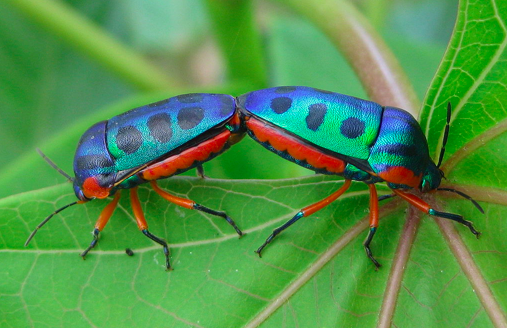
Here’s a citizen science opportunity: Help us identify this bug! Click here for images of the unknown species and keys for comparison to the most likely species.
Why is this necessary? One of the things field biologists must often do is figure out what species they are working with. This sounds simple! Sometimes it is. — There are common species in every environment. If you have a good guidebook, that you can refer to (or if you do some searching online), you can learn to recognize familiar creatures in your neighborhood. — But wonderfully, not all organisms are common.
The science of naming species is called taxonomy. Experts on a particular group of organisms make it their work to find and name representatives of as many species as they can. Why do this? Well, having names for things is the first step in learning anything about them. After all, in order to share what we learn, everyone needs to agree that we’re talking about the same organism!
 Systematics is the science concerned with organizing these named species into higher groups. Traditionally, the groups have a hierarchical rank that gets more an more inclusive from species, to genus, to tribe, family, order, class and phylum. Phyla are the largest taxonomic group. Some example are Phylum Arthropoda, which includes the arthropods, and Phylum Chordata, which includes all vertebrates like us. Ideally, systematicists choose group names that reflect the evolutionary history of those species. For example, it’s best if Chordata includes all vertebrates, and that there are no vertebrates outside Chordata. The same logic applies through out, but it gets less certain for obscure genera and families that might have lots of species.
Systematics is the science concerned with organizing these named species into higher groups. Traditionally, the groups have a hierarchical rank that gets more an more inclusive from species, to genus, to tribe, family, order, class and phylum. Phyla are the largest taxonomic group. Some example are Phylum Arthropoda, which includes the arthropods, and Phylum Chordata, which includes all vertebrates like us. Ideally, systematicists choose group names that reflect the evolutionary history of those species. For example, it’s best if Chordata includes all vertebrates, and that there are no vertebrates outside Chordata. The same logic applies through out, but it gets less certain for obscure genera and families that might have lots of species.
Biologists often find organisms that aren’t immediately known, and it requires some effort to make an identification. This means checking several different, reliable sources for descriptions that match the unknown organism you have. For bugs, I have a deep stack of references from our library.

Last February, in Florida, I saw the beautiful yellow bug in the picture at left. It reminded me of a bordered plant bug, Largus succinctus, But the coloration wasn’t right. I found several specimens in different locations around the Keys. Back at home, I started from my guess, L. succinctus, and confirmed the genus, but the species wasn’t right. Finally, I found a list of species in the genus Largus that included L. pallidus, a species common to the Florida keys, but found no where else. It matched the description: tan/yellow with fine black spots. My beautiful bug had a name! Now I could tweet the picture!

Amazingly, these books might not cut it for rare insects, and you have to search for journal articles describing the species of a potential genus in even greater detail. In February 2015, I collected one female soapberry bug of an unknown species from my hotel patio on Islamorada, in the Florida Keys. That female laid eggs and her descendants have done well in the lab. We now have a thriving colony of bugs. But what species are they? This turns out to be hard to say. It is from the genus Jadera, and the best description of species in this genus is from a 1979 German publication. Thankfully, a translation has been made, and the pictures are the important thing! While it may seem strange, the best way to distinguish closely-related species of insects is often the male terminalia, the appendages they use to hang on to females during mating. In the lab, we’ve taken turns staring at these pictures and at our bugs, arguing about which is the best match. Ultimately, this is a judgement call.
So, this is where citizen science can help us. This sort of matching is something anyone can do, if they’re careful. So, I invite our readers to try it out. I’ve set-up a SurveyMonkey page (click here) that provides the reference images of 3 known species and pictures of the unknown species we’re trying to identify. Consider the options. Take your time. Vote, and let us know your reasoning. I’ll let everyone know the results in a few weeks!



